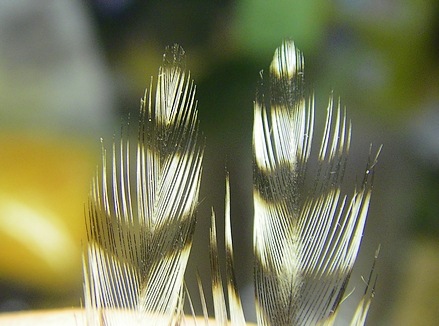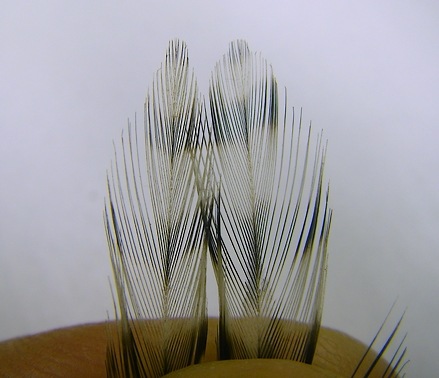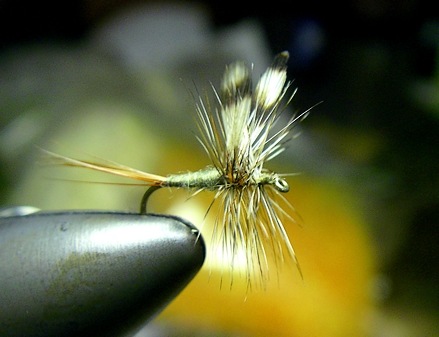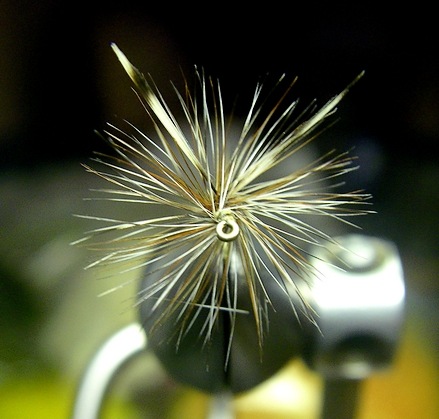My first commercial order was for two dozen Adams. I was 16 at the time, and quality control was letting the glue dry and giving it a couple of half hearted tugs – followed by a rigorous review of proportions.
By the time I’d completed 24 flies that passed muster I’d actually tied about 60 – and suffering through 60 flies of the same size and pattern was pure torture to a fellow that tied something different everytime he sat down.
It would be the better part of a decade before I could face the Adams without cringing, which is why the Mosquito figured so prominently in my angling development.
Hackle tip wings were my undoing. Grizzly specifically, and the lessons learned on that first order apply to the many flies since. Thousands of patterns pair materials for wings, cheeks, or body components – and attention has to be paid to the coloration of the pair chosen, as their mottling and coloration can make a perfect fly look less so.
Color can visually deceive the eye into thinking your proportions are wrong.

The above picture shows us a “bad pairing.” The hackles themselves are fine – their coloration is good, but using the above pair will make the fly’s left wing appear shorter than the right.
It’s the tips of the feather that cause the issue. The left feather is tipped in black, the right feather is tipped in white; using the two together will make the left wing appear shorter. Add in the hackle in front of the wings – a mixture of brown and grizzly that will bust up the barring of the wing segments and exaggerate the color difference further.

Here’s another pairing that will eliminate this simple problem. This “right” feather was next to the other “righty” above, yet has a black tip. Note how the bars are matched exactly with the left feather. This pairing will yield an Adams where the colors don’t upset the balance.

From the quarter view above, nothing really looks amiss. Wings are cocked and extend above the hackle, both look equal length, and proportions look solid.

Here is where the problem displays itself nicely. The black tipped wing (right) vanishes leaving only the last white segment visible. The white tipped wing (left) is strident and obvious, making the left look much too short.
Color. Normally it’s your friend but occasionally it can diminish or enhance a feature and throw your nicely tied fly into a tizzy. It’s the last thing to check before wrenching those precious hackles off the hide.
Tags: Adams, dry fly wing, grizzly hackle, fly tying tips, dry fly proportion, Mosquito,

Ya should’a been a teacher…great insight and explination.Some day kid …you’ll make the big league.
Monty
I made some kind of league earlier – where the shop proprietor looks up at me and says, “your small flies are great, can’t find anyone else to tie ’em … the big stuff I’ve got others to do those.”
… then his pencil makes marks on paper that I’m afraid to read …
100 dozen #16
100 dozen #18
100 dozen #20
… and the crowd was asking why I have so many reading glasses on the bench?
I did that for a number of years, then retired. Blind.
I agree with Monty!
“I did that for a number of years, then retired. Blind.”
So, in my particular case, learning from you seems to be a “blind leading the blind” scenario. Regardless, it’s working out very well for me, and like the best things in life, it’s free.